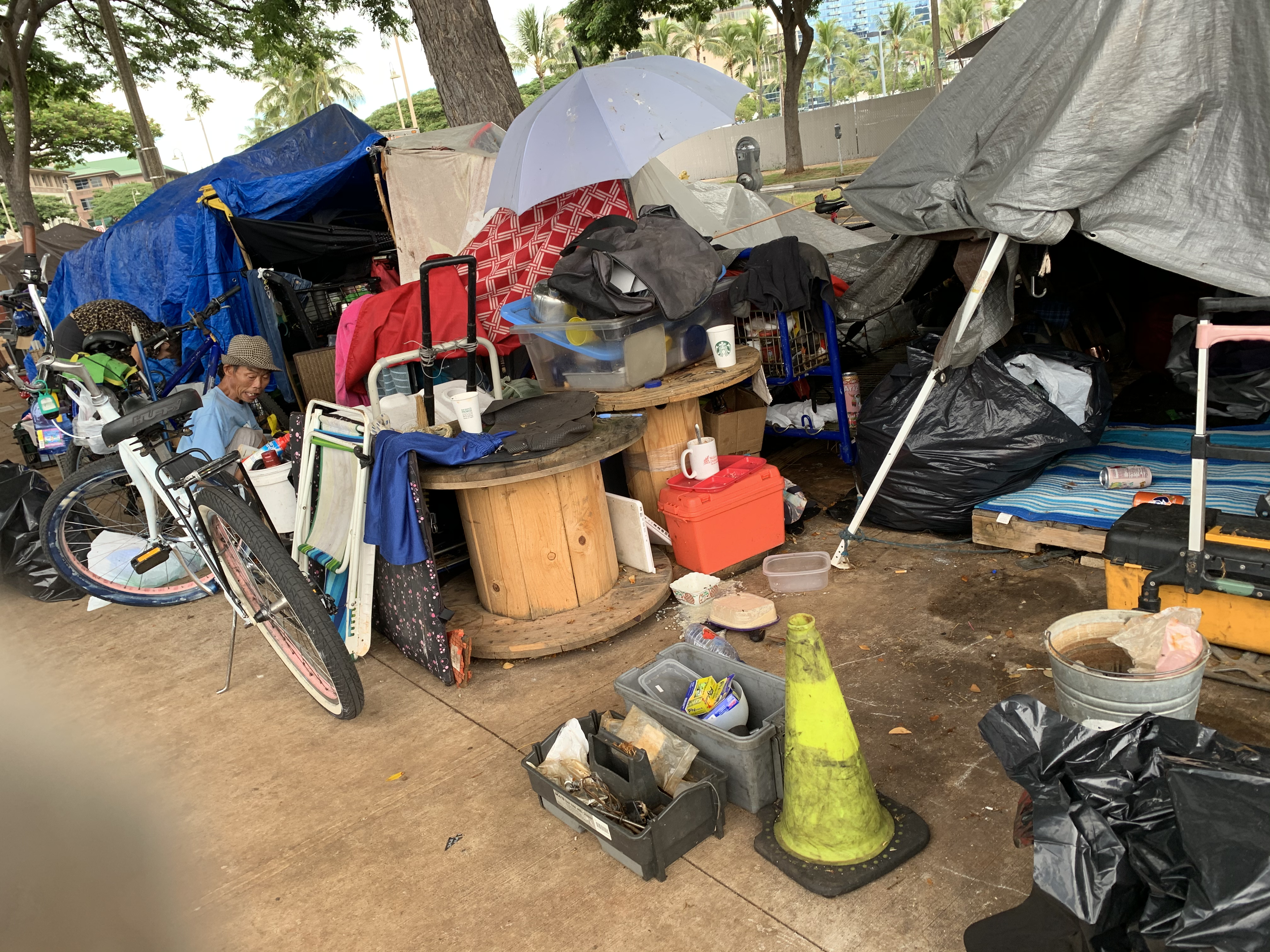Ka Po‘e o Kaka‘ako is a story about people and their struggle for a place to live.
Until recently, Honolulu's Kaka'ako area was home to auto body shops, carpentry and metal workshops, lunch wagons and light industrial businesses. Situated between downtown Honolulu and the Waikiki tourist hub, Kaka'ako development was originally intended to provide workforce housing. As high-rises came in, Kaka'ako seemed to attract more and more unsheltered people.
Ka Po'e o Kaka'ako began in 2018, when Hui Aloha began visiting the unsheltered, around Mother Waldron Park. James Koshiba, Cathy Kawano-Ching, and Alani Apio, the members of Hui Aloha, began by stopping at tents with coffee on Saturday mornings. They met people, and kept coming, kept showing up, asking what people needed, kept being there.
John Mantanona,
Aura Reyes, and others around the park started cleaning up together, and when enforcement moved them across Ala Moana Boulevard, they stayed together.
The group continued weekly clean ups, they began to attend Neighborhood Board meetings, and when the Children's Discovery Center voiced alarm at conditions near their campus, the group instituted clean ups and self-policing to keep the area safe.
John M and Aura emerged as leaders of Ka Po'e o Kaka'ako, KPOK, the people of Kaka'ako. Relationships with area businesses and leaders grew. KPOK organized an event to bring houseless service providers to Kaka'ako; mobile shower units, mental health services, dental check ups, social service sign ups, were brought to Kaka'ako Makai Park and KPOK members canvassed the area to get folks to show up for help. They did. And KPOK produced another service fair a few months later.
In summer, 2019, the City of Honolulu launched intense "enforcements," also called "compassionate disruptions," sweeping houseless individuals and their belongings off the street. In October, with support from Hui Aloha, KPOK began talks with Connie Mitchell of IHS, the Institute for Human Services, Oahu's oldest, and most comprehensive houseless service organization. They discussed the possibility of organized KPOK members moving as a group to an IHS facility.
After being "cleared" from various locations on 'Ilalo Street over several months, in November, 2019, all KPOK members were swept off the street. Some scattered, and have been living in Makiki area, McCully, or near the University. Aura found a place to live, her HUD housing assistance came through after 7 years on the street. John M and Uncle John moved to IHS' Hale Mauliola temporary shelter on Sand Island.
Today, many of the original Kaka'ako group are living on the beach at Sand Island, but a plan is in place to establish a kauhale village with help from the state and a hui of local businesses and allies. A kauhale community consists of individual units with shared cooking bathing, eating, and other services. People who once lived on the street in Kaka'ako, will participate in a kauhale model for affordable housing.
An example of that model is Pu'uhonua o Wai'anae, a community of 250 houseless on the Wai'anae Coast. In partnership with Hui aloha and other public and private entities, they have secured a parcel of land and are creating a permanent kauhale village.




